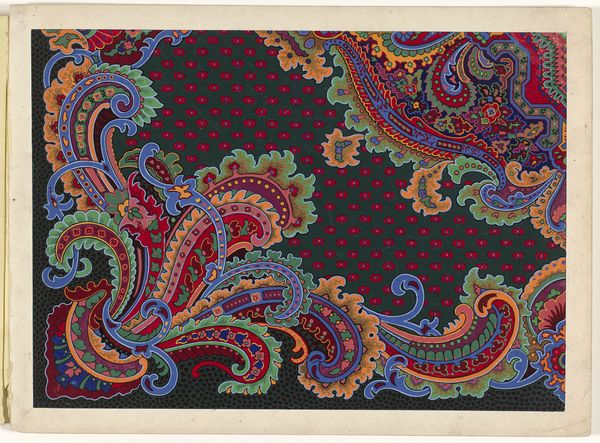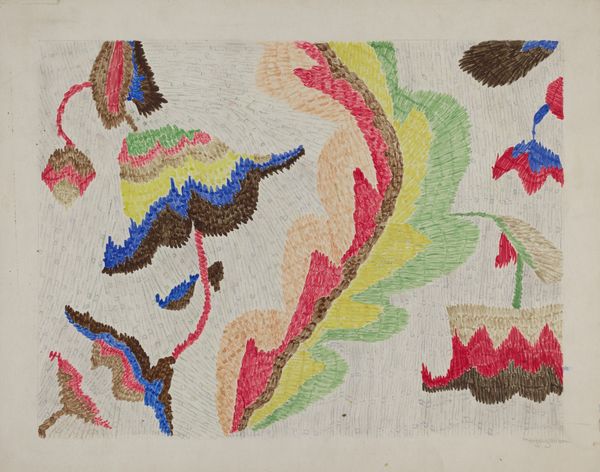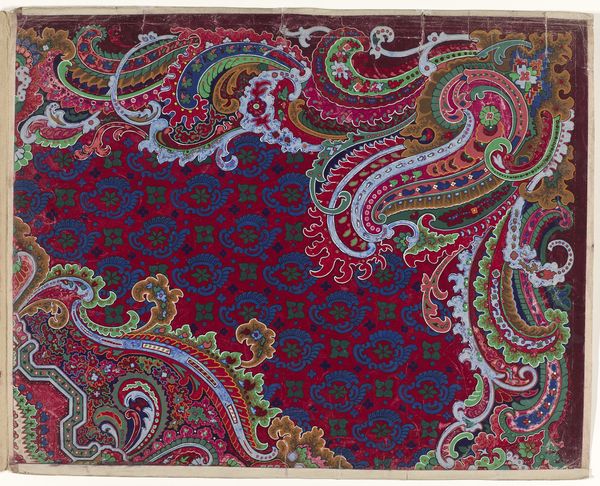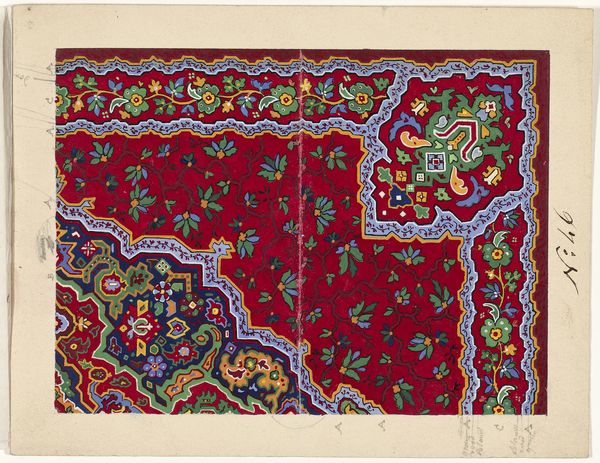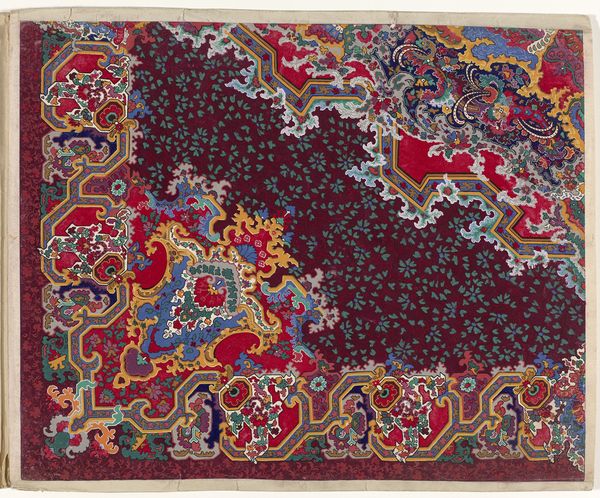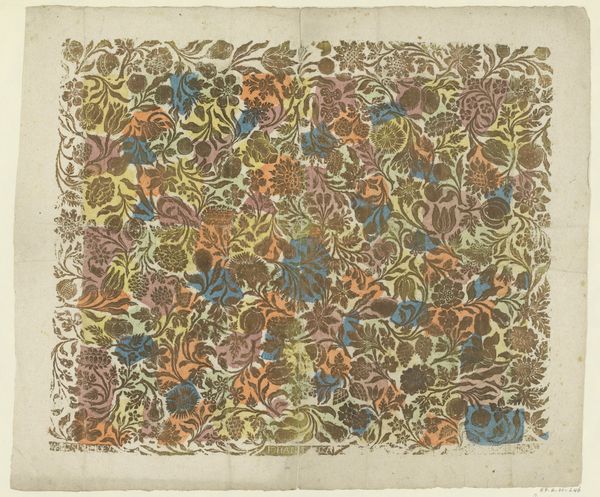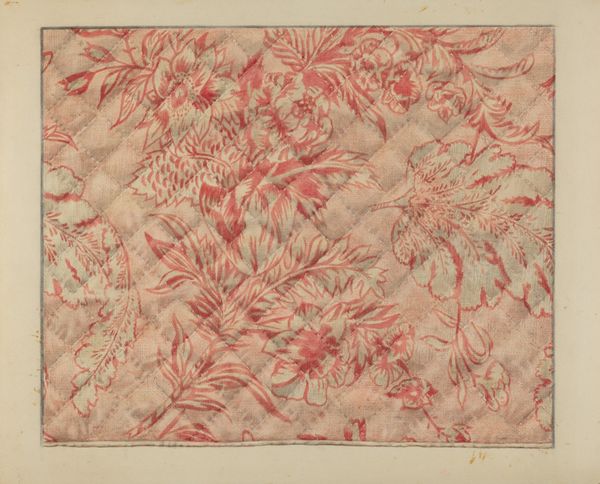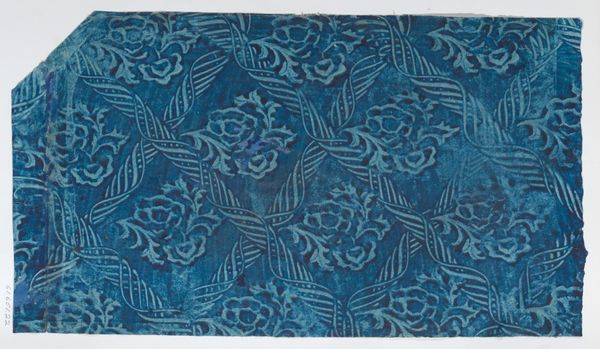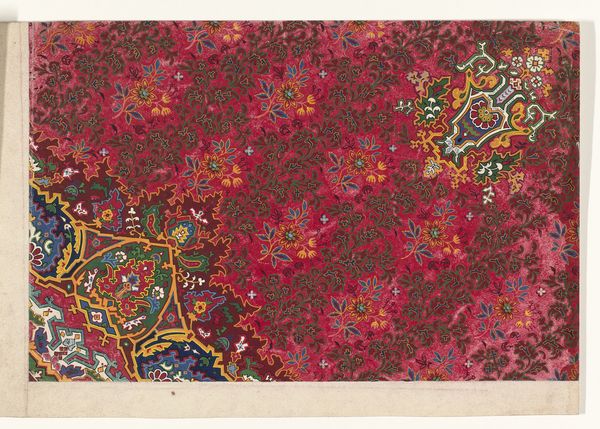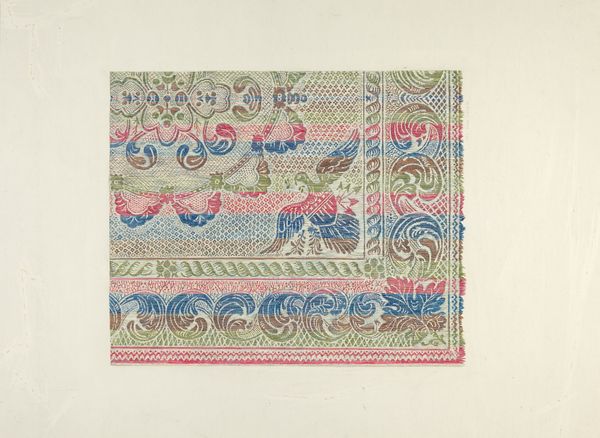
print, weaving, textile
# print
#
pattern
#
asian-art
#
weaving
#
textile
#
figuration
#
geometric pattern
#
organic pattern
#
geometric
#
orientalism
#
china
#
pattern repetition
Dimensions: 84.8 × 182.2 cm (33 3/8 × 71 3/4 in.)
Copyright: Public Domain
Curator: So, here we have a "Panel (Dress Fabric)" which could date anywhere from 1644 to 1911, originating from China. It’s held in the collection of the Art Institute of Chicago and the material is a woven or printed textile. Editor: Wow, okay. My first impression is of restrained chaos, you know? Like a meticulously organized storm. The top half feels so busy, but then your eye travels down to these very deliberate, almost soothing, wave patterns. Curator: I think your "restrained chaos" hits the mark! From a historical standpoint, these textiles, particularly with dragon motifs, held significant social weight in Manchu society. It’s not just decoration; it's a signifier of status, power, and belonging within that hierarchy. Who was permitted to wear what would have been extremely policed. Editor: Right, dragons are serious business. I guess I see a story in the layering – the mythical creatures swirling above the ever-present water, like destiny riding the waves of daily life. Or maybe that's just me projecting! What do you think of that striking blue trim at the very top? Curator: An interesting observation! That blue band likely serves to frame and emphasize the detailed imagery below, directing the viewer's gaze. There is also a visual connection to be made to those watery wave patterns in the lower portion of the piece. Considering gender, for instance, such fabric would also speak to women’s roles in textile production, and consumption, impacting not only courtly life but also influencing wider craft economies. Editor: Hmm. For me, it brings the whole piece together, grounding it and making me think about intention. I'm also struck by how well it’s held up – imagining someone actually wearing this. Talk about carrying a piece of history. I almost want to touch it! Curator: Its survival across the centuries indeed prompts that impulse to connect. And consider how meanings have transformed. We, today, may read into this panel symbolic weight that intersects with gendered experience, while the piece’s function during the period of its use would have been tied more clearly to political statements of power. It now lives a completely different life in the museum. Editor: Well, I will certainly never look at a dress the same way again! Curator: Precisely! The artwork’s historical context encourages an intersectional analysis, connecting themes of gender, power, and visual symbolism with those political, artistic, and socioeconomic forces that shaped the material and its legacy.
Comments
No comments
Be the first to comment and join the conversation on the ultimate creative platform.
